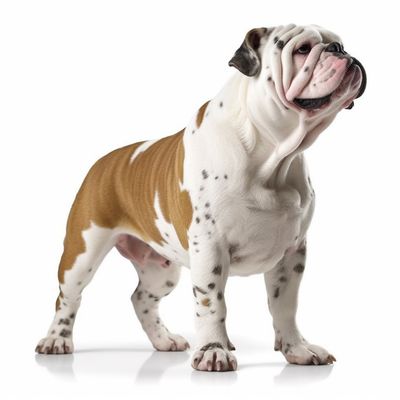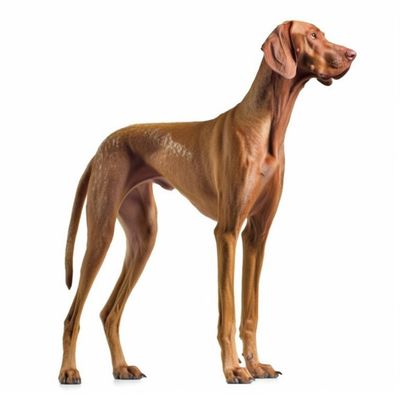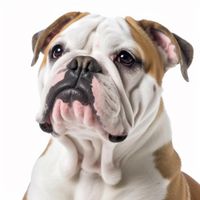English Bulldog - vs - Chesapeake Bay Retriever - vs - Vizsla

English Bulldogs are medium-sized dogs, weighing 40-50 lbs, with a height of 12-16 inches.
English Bulldogs have a low energy level, making them suitable for a more laid-back lifestyle.
English Bulldogs require minimal exercise, such as daily walks and some playtime.
English Bulldogs can be trained but may require patience and consistency due to their stubborn nature.
English Bulldogs are moderately intelligent and can learn basic commands and tricks.
English Bulldogs can adapt well to various living situations, including apartments and larger homes.
English Bulldogs are excellent with children, known for their gentle and patient nature.
English Bulldogs generally get along well with other pets, especially when properly socialized.
English Bulldogs can tolerate cold climates but should be protected from extreme cold.
English Bulldogs are prone to overheating in hot climates and need extra care to stay cool.
English Bulldogs have a short coat and shed moderately, requiring regular brushing to manage shedding.
English Bulldogs require minimal grooming, including occasional brushing and bathing to keep their coats clean and healthy.
English Bulldogs bark occasionally, usually only when necessary or provoked.
English Bulldogs have breed-specific health issues, requiring regular veterinary checkups, preventative care, and potential treatments.

Chesapeake Bay Retrievers are large dogs, weighing 55-80 lbs, with a height of 21-26 inches.
Chesapeake Bay Retrievers have a high energy level and require regular exercise and mental stimulation.
Chesapeake Bay Retrievers need a significant amount of exercise, including daily walks, runs, and opportunities to swim or retrieve.
Chesapeake Bay Retrievers are intelligent and trainable, but can be stubborn. Consistent, positive reinforcement is essential.
Chesapeake Bay Retrievers are highly intelligent dogs and excel in various dog sports and activities, especially those involving water.
Chesapeake Bay Retrievers can adapt to different living situations, but they need plenty of space and exercise to thrive.
Chesapeake Bay Retrievers are good with children when properly socialized and supervised.
Chesapeake Bay Retrievers can get along well with other pets, especially when raised together.
Chesapeake Bay Retrievers are well-suited for cold climates, thanks to their dense, water-resistant coats.
Chesapeake Bay Retrievers can tolerate hot climates but need to be monitored for signs of overheating during exercise.
Chesapeake Bay Retrievers have a dense coat that sheds moderately, requiring regular brushing to minimize shedding.
Chesapeake Bay Retrievers require regular grooming, including brushing and occasional bathing to keep their coats clean and healthy.
Chesapeake Bay Retrievers bark occasionally, usually only when necessary or provoked.
Chesapeake Bay Retrievers are generally healthy, but regular veterinary checkups and preventative care are still necessary.

Vizslas are medium-sized dogs, weighing 45-65 lbs, with a height of 21-24 inches.
Vizslas have a high energy level and require plenty of exercise and mental stimulation.
Vizslas need a significant amount of exercise, including daily walks, runs, and interactive play sessions.
Vizslas are intelligent and eager to please, making them easy to train with positive reinforcement.
Vizslas are highly intelligent dogs and excel in various dog sports and activities.
Vizslas can adapt to various living situations, but they thrive in active households that can provide ample exercise.
Vizslas are generally good with children when properly socialized and can be energetic playmates.
Vizslas can get along well with other pets, especially when raised together.
Vizslas have short coats and may not be well-suited to extremely cold climates without proper protection.
Vizslas can tolerate hot climates, but they need to be monitored for signs of overheating during exercise.
Vizslas have short coats and shed minimally, making them low-maintenance in terms of grooming.
Vizslas require minimal grooming, with occasional brushing and bathing to keep their coats clean and healthy.
Vizslas have average bark tendencies and may bark for various reasons, such as alerting their owners or during playtime.
Vizslas are generally healthy, but regular veterinary checkups and preventative care are still necessary.



